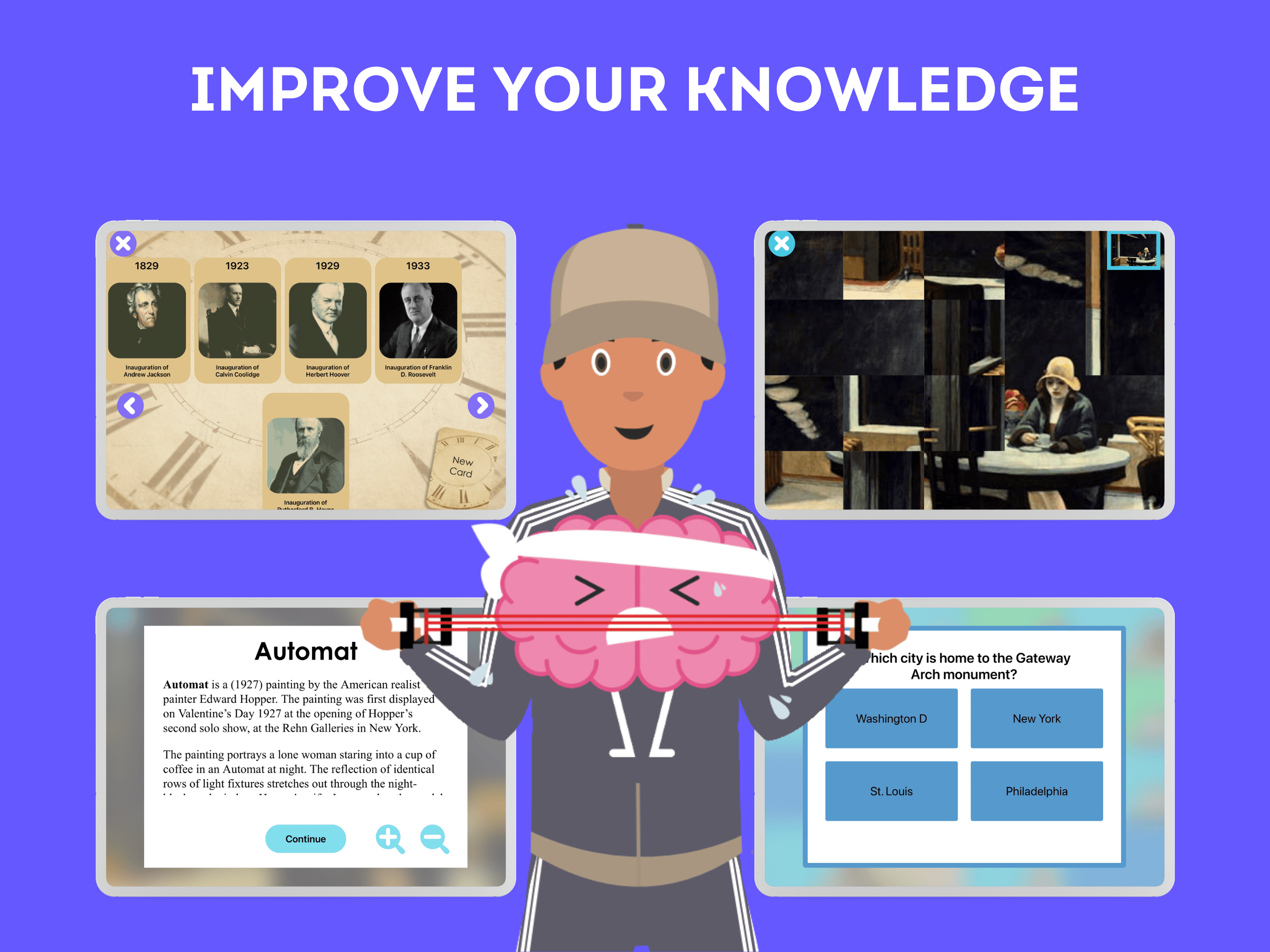Post-traumatic stress disorder (PTSD) is a mental disorder that can occur after experiencing or witnessing a traumatic event, such as an accident, assault or act of violence. Symptoms of PTS may include nightmares, flashbacks, anxiety, irritability, depression and insomnia.
However, brain training may offer a solution for people with PTS. The benefits of brain training for people with PTS can be numerous, including improved memory, attention, concentration and emotional regulation.
What is post-traumatic stress disorder?
TPS is a normal reaction to an abnormal experience. After a traumatic event, the body and mind go into shock, which can lead to physiological, emotional and cognitive changes. The brain reacts by producing stress hormones, such as adrenaline and cortisol, which can cause symptoms such as agitation, insomnia and hyper-vigilance.
PTS can be diagnosed by a mental health professional, such as a psychiatrist or psychologist. The diagnosis is usually based on a clinical assessment of the person’s symptoms and history. Treatment for PTS may include cognitive-behavioral therapy, exposure therapy, medication, or a combination of these approaches.
A common example of PTS is war veterans who have been exposed to combat situations. Veterans may develop symptoms of PTS after being exposed to intense combat, bombing, or terrorism. Symptoms may include nightmares, flashbacks, constant anxiety, hyper-vigilance, irritability, depression and intense emotional distress.
What are our brain’s defense mechanisms in the face of trauma?
Denial
This is one of the most common defense mechanisms. It consists of denying the reality of the traumatic event or minimizing its severity to protect oneself from the emotional pain. For example, a person who has been a victim of rape may deny the assault or minimize the impact it had on his or her life.
Dissociation
It is a state of emotional absence or disconnection that protects from the emotional pain of the traumatic event. For example, a person who has been in a car accident may feel disconnected from his or her body or from reality.
The projection
This is another defense mechanism that our brain can use to cope with trauma. It is about projecting our own emotions, thoughts and feelings onto others to avoid feeling them ourselves. For example, a person who has been abused may project his or her anger onto others rather than confronting it him or herself.
Sublimation
Sublimation is a positive mechanism that consists in transforming negative emotions into constructive behaviors. For example, a cancer survivor may decide to volunteer to help other patients cope with the disease.
What are the symptoms of post-traumatic stress disorder?
The revival
It refers to intrusive memories and flashbacks of the traumatic event. People with PTSD may re-experience the traumatic event on a recurrent and involuntary basis, even years after the initial incident. For example, a victim of sexual assault may relive the moment of the assault repeatedly, in vivid detail and with high emotional intensity.
Avoidance
It is a behavior of avoidance or withdrawal from any situation that could remind the traumatic event. People with PTSD may avoid places, people or activities that might trigger painful memories. For example, a person who has been involved in a car accident may avoid driving or being a passenger in a vehicle, even if it limits his or her social and professional life.
Neurovegetative hyperactivity
It is a state of overactivation of the autonomic nervous system that manifests itself through physiological symptoms such as sweating, heart palpitations, hyperventilation and insomnia. These symptoms are a normal response to impending danger, but in people with PTSD they are triggered by stimuli that are not actually dangerous. For example, a person who has been assaulted may be hyper-vigilant and overreact to loud noises or situations that do not present an immediate danger.
These three symptoms of PTSD can be very debilitating for sufferers because they interfere with their ability to lead a normal life. Treatments for PTSD aim to help patients overcome these symptoms by reducing their intensity and frequency, to help them regain control of their lives and mental well-being.
Why are traumatic memories so vivid and persistent?
The brains of people with PTSD process traumatic information differently than other information, which can make it harder to forget. Traumatic memories are stored in the long-term memory as “implicit memory”, a form of memory that is automatic and unconscious. This form of memory is normally reserved for simple and repetitive learning, but in the case of traumatic memories, it is overactivated and the memories are stored in a more lasting way.
In addition, the brains of people with PTSD process traumatic memories in different brain regions than those involved in processing ordinary memories. Traumatic memories are stored in the amygdala, a brain region that is involved in the emotional response to danger. This overactivation of the amygdala may explain why traumatic memories are so emotionally intense and why they can be so difficult to control.
Ultimately, people with PTSD often have difficulty distinguishing traumatic memories from the present, which can lead to flashbacks and reliving. This confusion between past and present memories may be due to an alteration in the hippocampus, a brain region that is involved in forming new memories and distinguishing between past and present events.
The benefits of brain training for someone with PTSD
Their emotions
First, mindfulness training can help patients better manage their emotions and reduce their emotional reactivity to traumatic memories. By learning to recognize and accept their emotions without judging or avoiding them, patients can better regulate their emotional state and reduce their anxiety, anger and sadness.
Ability to concentrate and memorize
Second, brain training can improve patients’ ability to concentrate and remember things, which can be affected by PTSD. By improving their attention and memory, patients can better focus on daily tasks and avoid being overwhelmed by traumatic memories.
The effects of cognitive training on the memory mechanism
Memories
It is true that brain training can help people recover their memories, especially in the case of memory impairment or brain injury. Brain training techniques aim to strengthen the connections between different areas of the brain, which can improve the brain’s ability to store and retrieve memories.
For example, mindfulness meditation is a brain training technique that has been successfully used to improve memory retrieval in people with memory disorders. Mindfulness meditation consists of focusing on the present moment by paying attention to one’s thoughts, emotions and body sensations. This practice can help reduce stress and anxiety, which can be barriers to memory retrieval.
Another brain training technique that can help recover memories is transcranial electrical stimulation (TES). This technique consists of applying mild electrical stimulation to the scalp to stimulate specific areas of the brain that are involved in memory retrieval.
Problem solving
Brain training can help people improve their problem-solving skills. Problem solving is an essential cognitive skill that can be used in all aspects of life, whether it is solving professional, personal or social problems.
Children can benefit from brain training by developing their ability to solve complex problems, improve their attention and concentration, and strengthen their short-term memory. In adults, brain training can help improve problem solving in work, personal life and social relationships. Older adults can also benefit from brain training by improving their short-term memory, logical thinking skills and attention.
It is important to note that brain training should not be considered a panacea for all cognitive problems. It is always important to consult a health care professional before beginning any brain training program.
Train your brain with CLINT
Brain training to improve problem solving can take many forms, including logic games, puzzles, brain teasers, memory exercises and other activities that stimulate the brain. These activities can help improve concentration, short-term memory, logical thinking skills and creativity, all of which are important problem-solving skills.
The CLINT Brain Training program was designed specifically for adults to keep the brain healthy through fun and challenging brain exercises. It has over 30 cognitive games and targets concentration, focus, reflexes, language and many other cognitive functions.

Other articles that might interest you:
How Parents Can Contribute to Teacher Training
As we delve into the realm of education, it becomes increasingly clear that teacher training is not merely a...
Differentiated Instruction Approaches: Training and Practical Application
Differentiated instruction is a pedagogical approach that recognizes the diverse needs of students in a classroom. It...
Key Skills Teachers Need to Support Students with Special Needs
As we embark on our journey to support children with special needs, it is essential for us to cultivate a deep...










